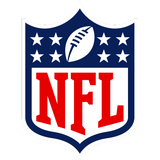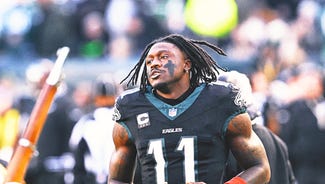
NFL says concussions dropped by 13 percent in 2013
SEATTLE -- Dr. Richard Ellenbogen was working the sideline of a preseason NFL game last month as an unaffiliated neurological consultant when a team's position coach asked him to take a look at a player who was showing signs of a possible concussion.
Not an athletic trainer or a team doctor, but a position coach. It was added affirmation for Ellenbogen, the co-chairman of the NFL's head, neck and spine committee, that head injuries are being taken seriously.
"Although he was fine, we kept him out for 15 minutes doing the exams, and we watched him and we examined him again," Ellenbogen said from his Seattle office Wednesday. "I mean, could you imagine a position coach, he asked three times, 'Is the guy OK? What do you think?' You can go anywhere in the country and you can talk about concussions now. Probably five years ago they go, 'What is a concussion?' Now everybody is in tune. The culture has changed."
The NFL released its Health and Safety report to The Associated Press on Wednesday and concussions decreased overall during the 2013 season. The league said concussions were down 13 percent from the previous year and the number of concussions coming from helmet-to-helmet contact was down 23 percent.
Those numbers were notable considering concussions were a particular focus for the league during the 2013 season, which included independent neurologists on the sidelines and unaffiliated athletic trainers watching for injuries from the press box.
"That's not success, but that's a nice move in the right direction," said Jeff Miller, the NFL's senior vice president of health and safety. "When you talk about culture change and you look at that 23 percent number, there is something going on that is relevant. And we would want to eliminate more of those helmet-to-helmet hits and we will. And we want players to react to change the way players play the game to avoid that kind of incident. And we will continue to push that, but we're very well aware that the progress that we've made, while good, indicates there is more work to be done, too, and we'll continue to pursue that."
Ellenbogen's experience in the preseason only reinforced that the education of players and coaches is working. The league's focus now is getting that education to permeate the youth level, including an investment of $45 million in USA Football's Heads Up Football training program to improve safety and teaching proper technique at the youth level. The league had initially committed $1.4 million in 2013 toward the program.
Additionally, every state now has youth concussion laws after Mississippi became the 50th state to approve legislation earlier this year. It was a movement Ellenbogen helped start in Washington state.
The league is also committing funding to help provide athletic trainers to underserved high schools throughout the country. Ellenbogen hopes that will help in the diagnosis and treatment of head injuries.
"I thought it would take a generation. A generation! It hasn't even taken a decade to see," Ellenbogen said. "Is it where we need it to be? No. We have some improvements. Is it where we thought it would be? I think it's three times ahead of where I ever thought it would be at four years out."
The report also noted there were fewer ACL injuries in 2013 than the previous year, and MCL injuries were almost the same. Miller said concerns about the new rules on defenseless receivers possibly leading to lower body hits and more leg/knee injuries didn't pan out statistically â at least in the first year.
"That is an important concern and one that we took a look at, and in this one year it had no effect whatsoever. ... We were gratified by that," Miller said. "Just because the head-to-head contact is coming out you're not increasing injuries elsewhere. Those are things we'll continue to watch."
Miller said the new rules for 2014 on cut blocking and linemen not being able to roll up on defenders should also help reduce knee and leg injuries.










